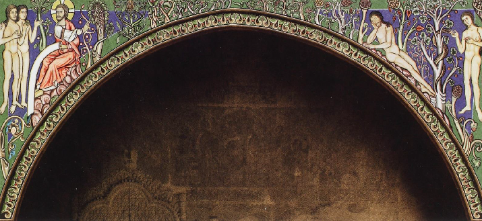The Chapter House Frescoes at Sigena Reconsidered
Tuesday 2 June 2015, 5.30PM
Speaker(s): Susanne Wittekind (University of Cologne & CMS Visiting Professor)

Founded in 1188 by Queen Sancha, daughter of Alfonso VII of Castile and wife of Alfonso II of Aragon, Sigena held a very important position within the Kingdom of Aragon. Initiated as a royal burial place, this female convent of the knightly order of the Hospitallers served not only as a retreat and residence for Sancha and her daughters, but also housed the royal treasury and archive. This high status of the royal monastery of Sigena is echoed by the artistic decoration of the main monastic buildings, especially the muqarnas ceiling and the paintings of the chapter house.
Already Pächt (1961) und Oakeshott (1972) recognized English peculiarities in the iconography of the chapter house paintings. They noted a close stylistic relationship to the Winchester Bible (c. 1180), and similarities in the selection and composition of episodes from the Old and New Testaments between Sigena, the Canterbury Psalters, and contemporary mosaics in Norman Sicily. Recently Caviness (2013) related the extended depiction of the ancestors of Christ in the soffits of the transverse arches at Sigena to the stained glass cycle in the transept of Canterbury Cathedral; Pagès i Paretas (2012) highlighted the personal relationship between the Castilian and Aragonese royal families and their Aquitanian and English relatives and allies, and Stratford (2014) pointed to the important intermediary role of the commanders of the Hospitallers.
This lecture focuses on the question of audience for the extraordinary chapter house decoration. It identifies peculiarities in the selection and depiction of subjects in the chapter house paintings and interprets them in view of their female aristocratic audience, reading them as statements about the religious and political concepts of kingship, rule, and female spiritual life conceived by Queen Sancha and the convent of Sigena. The second part of the lecture will be concerned with the selection and spatial organization of the scenes within the chapter house in relation to the chapter office and to the adjoining church with its frescoes and its royal burial place. Taking into account processional ways, as well as virtual or imaginative axes, this will serve to explore the multilayered semantics of the chapter house decoration. The third part of the lecture will consider the placement and austere design of the royal tombs and search for models and meanings of this specific arrangement, showing the significance behind the spatial union of a royal panteón, the royal archives and the royal insignia within the female monastery of Santa María de Sigena.
Location: King's Manor KG/84
